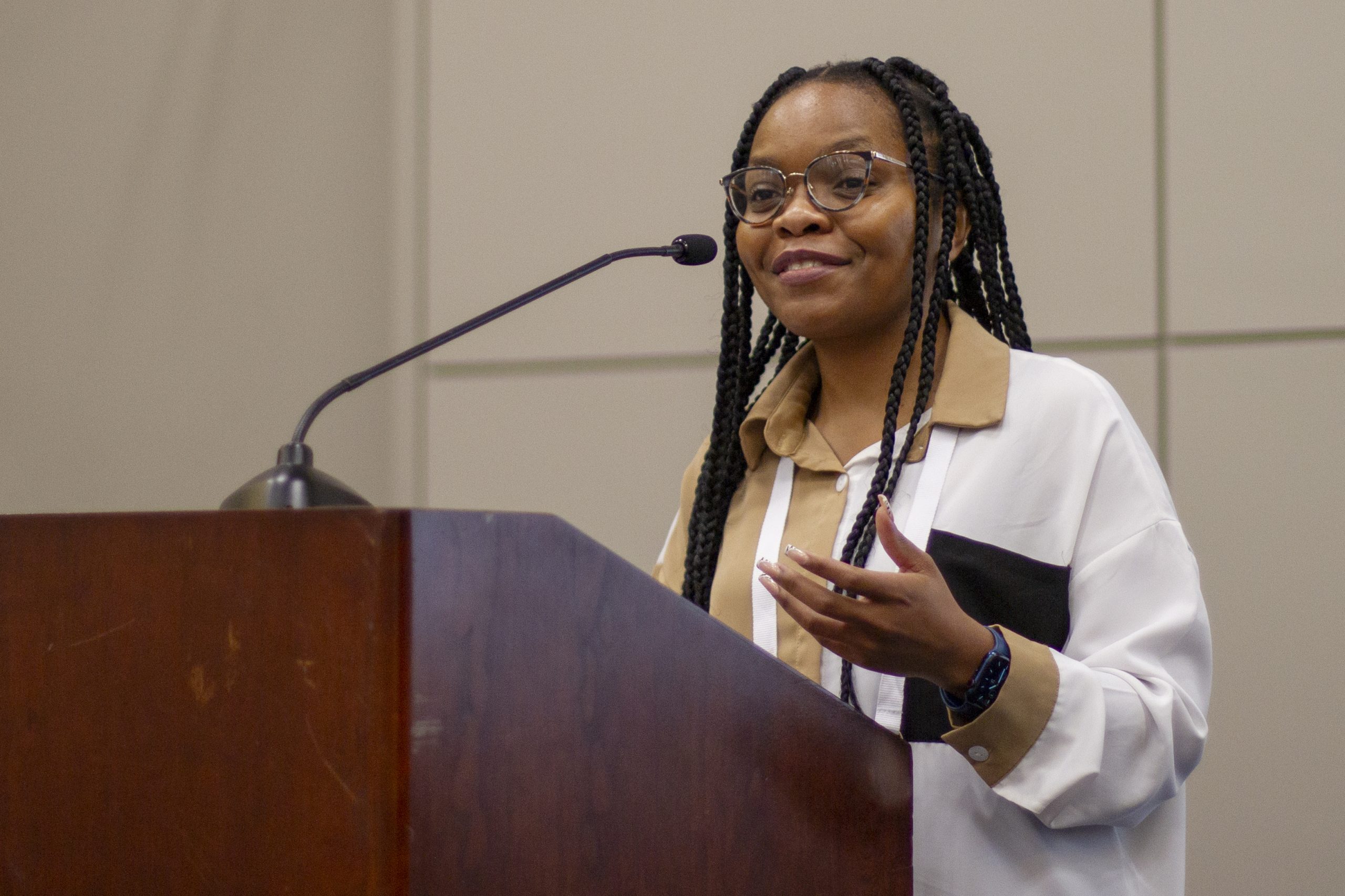
Although the COVID-19 pandemic has subsided, libraries are still adopting new practices directly influenced by the pandemic, said Safi Safiullah, chair of the American Library Association’s International Relations Round Table (IRRT) and manager at Salt Lake City Public Library, at ALA’s 2023 Annual Conference and Exhibition in Chicago on June 25. This set the theme for Safiullah’s tenure as chair: The New Normal for Libraries Around the Globe.
The session “From Pandemic to Endemic: Global Experiences and Perspectives on an OCLC New Model Library Framework” brought together library workers from three continents alongside members of the research team who created the model to explore commonalities and key differences in how international libraries experienced the pandemic. Clara M. Chu, director of the Mortenson Center for International Library Programs at the University of Illinois at Urbana–Champaign, moderated the session.
In 2020, researchers at OCLC surveyed 29 global library leaders about how they were responding to the COVID-19 pandemic. The responses revealed how libraries adapt to changes, particularly in respect to changing job environments, physical and digital resources, and in-person connections. The findings, released in late 2021 in the research briefing New Model Library: Pandemic Effects and Library Directions, distilled the data into four areas of impact: agility, collaboration, virtualization, and space.
The New Model Library framework is intended to help libraries find common ground with peers, identify new ideas and directions, and share their own experiences. “The library is continually changing,” said Lynn Silipigni Connaway, executive director, research, at OCLC. “And it should be. Our environment and our communities are continually changing.”
Agility
“Being agile is fundamental in supporting the other impact areas,” said Tan Huism, executive director of the Qatar National Library (QNL). “We think we’re past the pandemic, but we have other disruptive forces.” COVID-19 was not the first pandemic for Singapore, she added. “You learn from each one, and we’re ready.”
New pandemics aren’t the only force libraries need to prepare for. Events that occur in nature or events that are human made—like microaggressions, the need to take care of loved ones, the great resignation, and dealing with or fighting with book bans—all affect staff well-being, said Ixchel M. Faniel, senior research scientist at OCLC. Pandemic adaptations showed a growing awareness of staff experiences and a need to care for staff beyond meditation, yoga, and counseling. “There are other things we can think about to make sure fostering staff is embedded into the culture,” she said. “And make sure those two activities are reinforcing each other.”
“How do you still consider all staff equitably if some staff are working remotely and some aren’t?” asked Andiswa Mfengu, lecturer in the Department of Knowledge and Information Stewardship at the University of Cape Town. Flexible work also extends to working from other areas, Connaway added. Some libraries have extended their hybrid assignments to include off-site community locations to extend the presence of library staff into the community through bookmobiles and other methods, Connaway said.
Collaboration
“Partnerships are extremely important, but it has to be a partnership that will give something to the library as well as the partners and the community,” Connaway said. Mfengu echoed this sentiment. “You can’t just partner to partner,” she said. When negotiating for electronic resources and developing open-access sources as a group, it must be grounded in a social justice perspective. “At the University of Cape Town in South Africa, we can afford to purchase many resources, and that should translate to universities [across the continent].”
In Asia, collaborations are crossing international borders. In Vietnam, 70% of the population live in rural areas with no ready access to provincial libraries, Huism said. To extend its mobile library reach, the National Library of Vietnam is working with partners such as the Library of Indonesia.
Space
Libraries in Peru are overcentralized, with a dearth of public libraries, according to Sara Ulloa, head librarian of the secondary school at San Silvestre School in Lima. It was through the pandemic that the National Library of Peru invested greater resources in branches outside of Lima and a traveling bookmobile. “We need to take libraries to the whole country and not just centralized in the capital,” Ulloa said.
In some parts of Africa, everyday realities include power cuts and unreliable and expensive internet connectivity, Mfengu said. “It’s important to bring inequality forward because it does relate to decisions and experiences from the continent.” COVID-19 has exponentially increased the need to work together and connect, she said, and physical libraries help to support users by being a consistent source of internet access and reliable power.
Virtualization
Many libraries moved services online to support their staff and users during the pandemic. The National Library of Peru created a lot of online education programs as well as professional development resources using local resources and experts across the world, Ulloa said.
More recently, QNL launched Manara, a digital research depository, to support discoverability of research done by Qatar-based researchers. Usage has been international, Huism noted, and research has shown that authors see an increase in citations when their work is available on an open-access platform.
“It’s essential for us to provide circulation options for connectivity … for the local community to participate fully in digital life,” Connaway said. This includes lending hotspots, providing outdoor Wi-Fi, and allowing users to engage with the library virtually from within the physical library.
“The new normal is the old normal, which is that libraries are at the heart of their communities,” Chau said.



